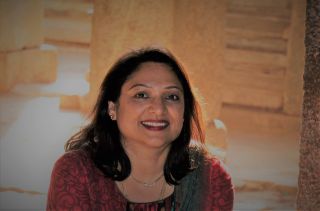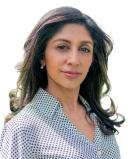Identity
Rethinking the Scripts on Identity in the Indian Diaspora
An interview with a South Asian mother and son.
Posted June 28, 2023 Reviewed by Davia Sills
Key points
- In South Asian countries, the notion that "it takes a village to raise a family" is a strongly held belief.
- Coming out as a South Asian can differ depending on age, region, school, and family dynamics.
- Currently, the number of LGBTQIA+ resources has grown immensely in the Midwest.
In honor of Pride month, I would like to share a conversation I had with artist-choreographer Kiran Rajagopalan and his mother, clinical psychologist Vaidehi Rajagopalan. Our conversation was wide-ranging, touching on issues of gender identity, sexual orientation, and the South Asian immigrant experience. The conversation is edited for length and clarity.
JB: Kiran, can you tell me about your childhood? What expectations did you have to deal with?
K: I’m considered an elder millennial, and in those days, you couldn’t be anything but straight and white. My early childhood was very much a binary world; the idea of trans, gay, straight, etc., was not talked about. I grew up in Maryland Heights in St Louis, Missouri, and went to a school that was largely white in the ’90s. Around age 7 or 8, I began to get normative behavioral cues about what it means to be a boy or girl. However, this was at odds with what I was doing outside of school, which was Indian classical dance.
You know, I was “a weird kid.” I wasn’t doing what other young boys were doing, but I had my parents’ support no matter what, which I am eternally grateful for. They always wanted to do what was best for me, allowing me to develop my individuality and identity. Given my older brother had special needs, we automatically became this nurturing family unit. But whatever my parents had bolstered at home would sometimes be confronted at school. The “F word” was thrown around, and there weren’t many expansive or positive ways of thinking about sexual or gender identities at that time. The dance community became my safe space.
Any normative expectations I had to contend with mainly came from my paternal grandparents during my 20s while living in India. They had begun asking me when I was getting married.
JB: Was that your impetus to come out?
Kiran: I didn’t come out quickly or in a big way. I wanted to experience things and question things from a foundation. Both my parents are research scientists who encouraged me to think critically. Coming out when I was older allowed me time to make sure that what I was going to say was not only a truth that is viscerally felt in my body and my spirit but also afforded me the wisdom to know what it is that I was experiencing.
While I was at Boston University, there wasn’t much of an LGBTQ community back then, and I didn’t really expose myself to too much of the LGBTQ experience. In hindsight, I felt like it was kind of like a “whitewashing” of who I was. I wanted to reinvent myself socially after high school. It was while studying in Spain that I finally started to explore the gay district in Madrid.
After I moved to India to pursue dance and connected with LGBTQ activist friends, I started to develop a language for what I was going through at that time. While the Indian classical dance community held heteronormative and casteist values, it was the artistic world that I had become a part of and very much identified with. By the time I returned to NYU in 2014, I had realized my main identity was as an artist, dancer, and South Indian, with my sexual orientation being the undercurrent of it all.
But I had very little dating experience. And I think this was partly due to the South Asian-ness in me. I had no role models, and everyone dated in secret. Growing up, I was seen as a “good boy,” being so focused on dance and doing well in school. When I was seriously dating someone for the first time, I just told my parents about it in a very short conversation. I actually never “came out” to my friends even; I just would tell them who I was dating.
JB: Vaidehi, what was your reaction when he told you?
Vaidehi: As a psychologist, I had perceived that growing up, Kiran was struggling with sexuality and, later, with sexual orientation. Once, Kiran mentioned that he had a homework assignment in which he had expressed that he was bisexual. Yet, this time when he shared this, my husband and I just gasped.
I had been guessing this was coming. I’m not going to lie; my heart sank. It’s only because, like any other parent, we also wanted to be grandparents, and we didn’t know what this all meant. We just began processing this information. Later my husband stated that “at least he’s comfortable with himself, and we should give him what he needs at this point.” But I was still digesting all of this.
Kiran: I could tell that you were processing. I was grateful that it wasn’t a disownment or a huge ordeal. I wasn’t totally surprised by their reaction. But my dad had a look of sorrow on his face, and he didn’t say anything. I will never forget my mom said something really sweet: “Give us some time to process; I just need to reconcile my cultural biases with this.” I didn’t demand validation from them because I wanted to respect that they needed the space and time to process this.
This is why I was grateful that I was older. I just wanted to be certain, given the implications. Coming out, no matter how casually, can generally change the atmosphere in a room very quickly, it has an effect, and I wanted to make sure that I could handle it.
JB: Vaidehi, how did the narratives from your family, as well as being a psychologist, impact your response to this?

Vaidehi: In India, individuals take the concept of “it takes a village to raise a child” quite seriously. I was married relatively young and inexperienced, and my in-laws were of that mindset and certainly tried to exert their authority in how our children should be brought up. I was raised by parents who used an authoritative style of parenting. While they were physically available, I was expected to be emotionally strong as a woman and a mother and be responsible about how our values and beliefs were passed on to my children.
I have two children on the spectrum of human potential and abilities. Unlike myself, both were born and brought up here. My older son can be described as a neurodivergent individual and falls into the autism spectrum. On the other hand, Kiran is part of the LGBTQ community and was earlier in his life assessed as falling in the above-average range of intelligence. While testing and professional assessments, which came later, helped in the validation of my feelings, I was able to sense intuitively the parenting style that I would choose that would have to work well with my children’s personalities, cognitive styles, and special abilities.
While, as a family, we were active members of the community, I became very conscious of the beliefs of some of our community members. I would receive backlash for spending “too much time” at work, and there was even some blame for my older son’s behavioral issues. My “psychologist” voice got louder, and I found myself questioning the value of exposing our children to this biased version of Indian culture. I realized it might not be a conducive environment for our kids to develop their own identities. I began to withdraw from participating indiscriminately in all cultural activities and began to focus on those that offered the cultural experiences we wanted for our children.
I also surmised that I needed to direct the advice that I gave clients who were parents to my own life. My internal dialogues changed, and so did the scripts. It is only within the last three years that I have begun to consistently align my internal scripts with our parental goals. It’s a work in progress.

JB: Can you share some of that advice that helped you change your own internal scripts?
Vaidehi: Sure, here are some points that have emerged from my experiences parenting my two children:
- The window of opportunity for parents is narrow. Grab it and use it to impart valuable life lessons.
- Keep your eyes and ears open as much as possible to really be there for your child.
- Do not be conditional as you impact your values and beliefs.
- Be open to questions from your child. Show interest, listen, ask questions to clarify, and let them lead you.
- Be open to new ideas, accept your ignorance when appropriate, and take responsibility to find out more about the issue.
- The closer you are to your child emotionally, the more inclined they will be to seek advice from you.




